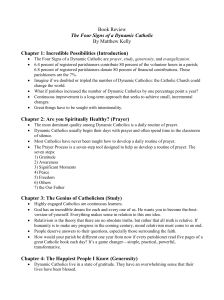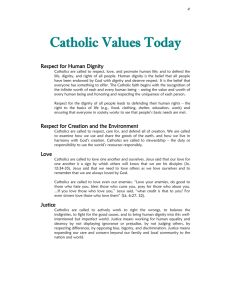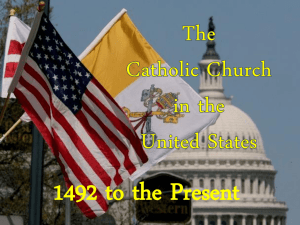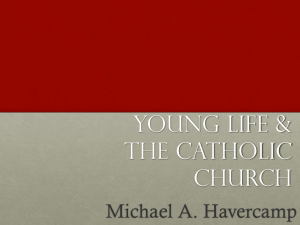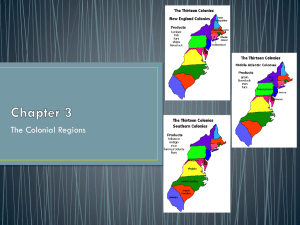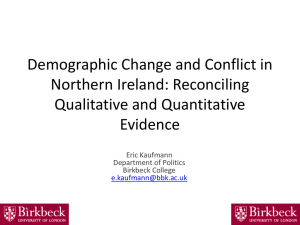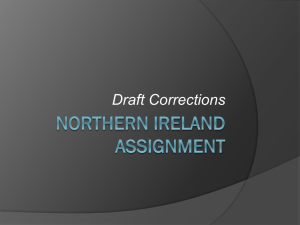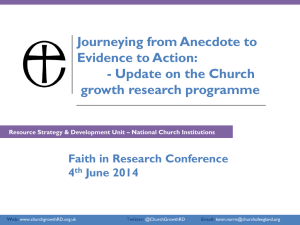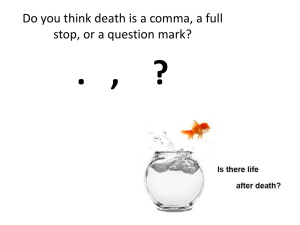CPA Print Impact Study by CARA Powerpoint
advertisement
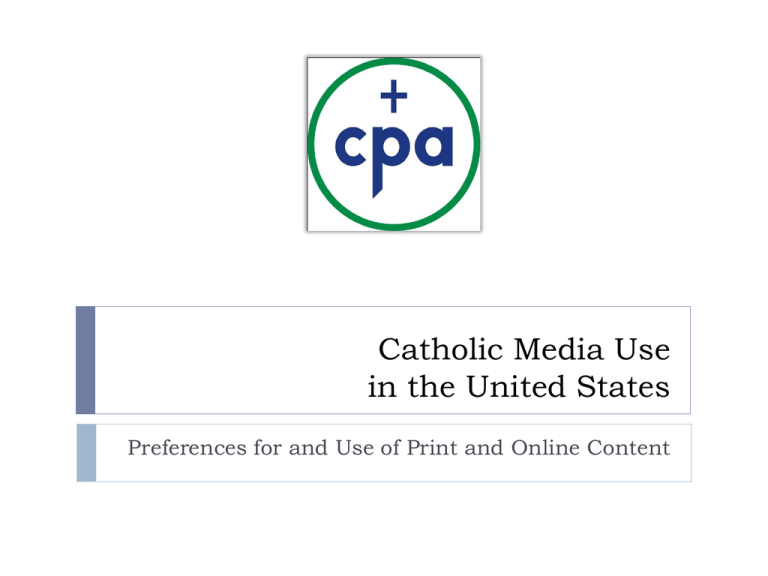
Catholic Media Use in the United States Preferences for and Use of Print and Online Content Survey Methods The survey was conducted by the Center for Applied Research in the Apostolate (CARA) using Knowledge Networks’ nationally representative panel. A total of 1,075 self-identified Catholics, age 18 and older took the survey between May 12 to May 20, 2011. The sampling margin of error for the survey is ±3.0 percentage points. Every 1 percentage point of the total sample is equivalent to 570,000 Catholics. Thus, if 26% of respondents indicate recently reading a diocesan newspaper or magazine this results in an estimated 14,820,000 readers. 1 in 4 adult Catholics have read a print diocesan publication in the last 3 months -Readership is unchanged from CARA’s 2005 media use survey (25%) -Online readership of diocesan newspapers is much lower. Only 3 percent of adult Catholics report reading online in the last three months. 4 in 10 have ever read a diocesan publication in print or online 18% of adult Catholics typically read a print copy at least once a month 8 in 10 readers rate their diocesan publication as ‘good’ or ‘excellent’ How readers get their diocesan publication: A majority of weekly attenders read in print Younger Catholics aren’t more likely to move online for diocesan content Only visits to parish websites are up 2 in 3 readers of national Catholic print publications agree they are ‘very satisfied’ with what they read There is not a strong preference for online content Most readers aren’t moving online and say their print publications are important to them There are some generational differences: Time & Money Factors Effecting Use Open-ended question: Examples of negative reactions to the openended question: A big mistake. Betrayed. Converting to digital sources would lose a human element of reading something in hand versus on a screen. Feel they would lose readership as people would overlook them as the internet is very distracting. The print is expensive but reaches the greatest number of people and unites us across the Archdiocese. I believe it would have an adverse effect for our faith. I don't read newspapers online. I feel it could be corrupted or infiltrated. I probably wouldn't read as much. I think it would somewhat detract from the publications credibility because online content is so prolific and the source of the content is very difficult to assess with only an online presence. Terrible! I work on a computer all day. So, when I'm home I only use my home computer for necessary things. Examples of positive reactions to the openended question: Better to get message out less expensive. Fine. Good for saving on overhead. I could easily make the adjustment if I had to. I feel like it would be good for the environment and I might read them more. I guess that is the way the world is going, and it would save on paper and costs. I think it is a good way to spread the happenings of the church to those who may not attend or know what is going on. I would be willing to give it a try online. I'd prefer it. Going green is what Jesus would do. Just fine to be able to look up back issues. Would be okay with this. Research summary Readership of diocesan print publications has remained unchanged in the last six years with about one in four adult Catholics reading in the last three months. Among all Catholics, as well as young Catholics, there is no widespread preference for Catholic, religious, or spiritual content online. There is no dominant online website drawing Catholics in. The only growth is in visits to parish websites (up from 5% in 2005 to 14% in 2011). Other data (see next slide) indicate a significant drop in Americans searching for anything “Catholic” online. Final thoughts Assumptions about the Internet being the “future” of Catholic media and “where the young Catholics are” are not matched in data. Catholics, including young Catholics are online. They just are not doing religion, faith, or spirituality online yet in great numbers. Print publications can push content into households and be one of a few reading options available in the home. However, no one can force a person’s web browser to visit a specific website in the vast expanse of the Internet. Online content is not “broadcast” nor is it “mass media.” Instead it is just there for those who purposefully seek, visit, and read a webpage (i.e., narrowcasting). Unlike the secular news media, Catholic publications do not have significant competition online (and where this does exist locally, few Catholics are likely to access the content online relative to print readership). Diocesan publications have a much stronger hold on their niche of the market than the secular newsmedia.
